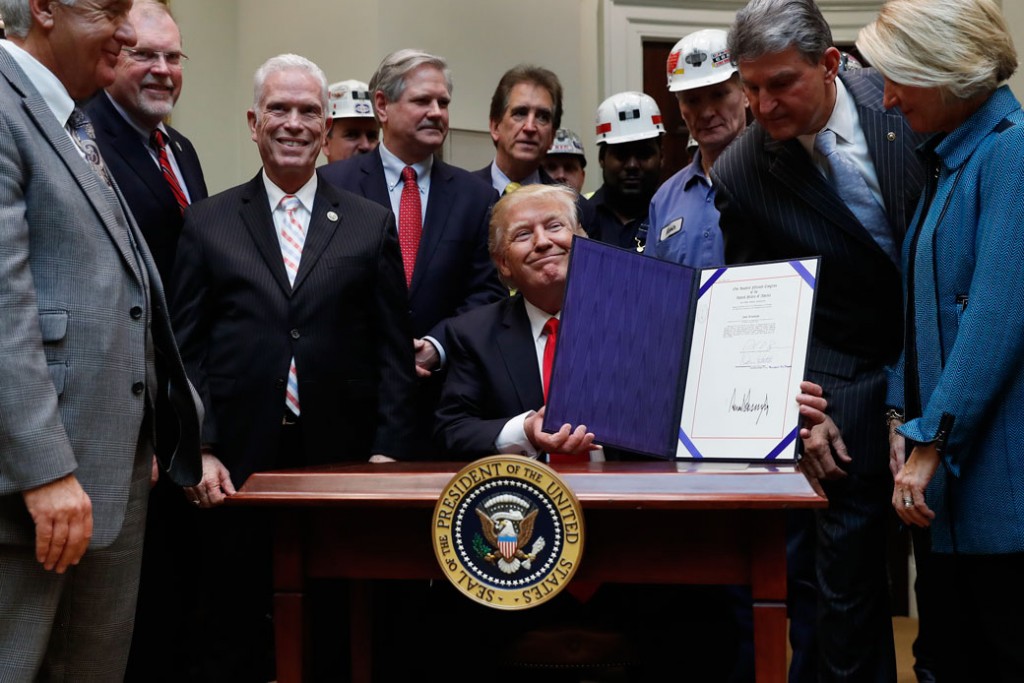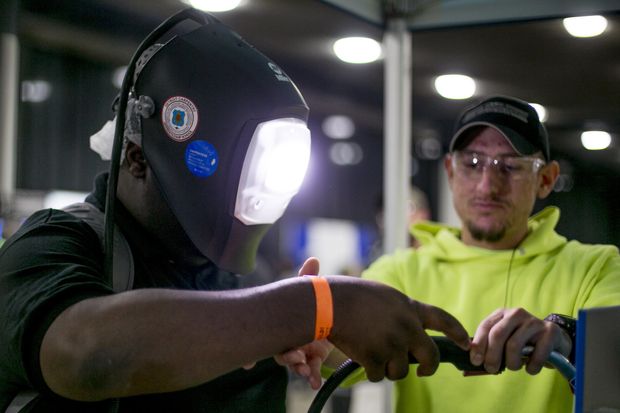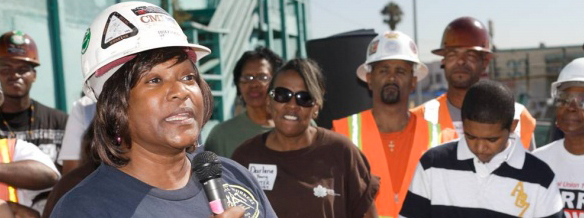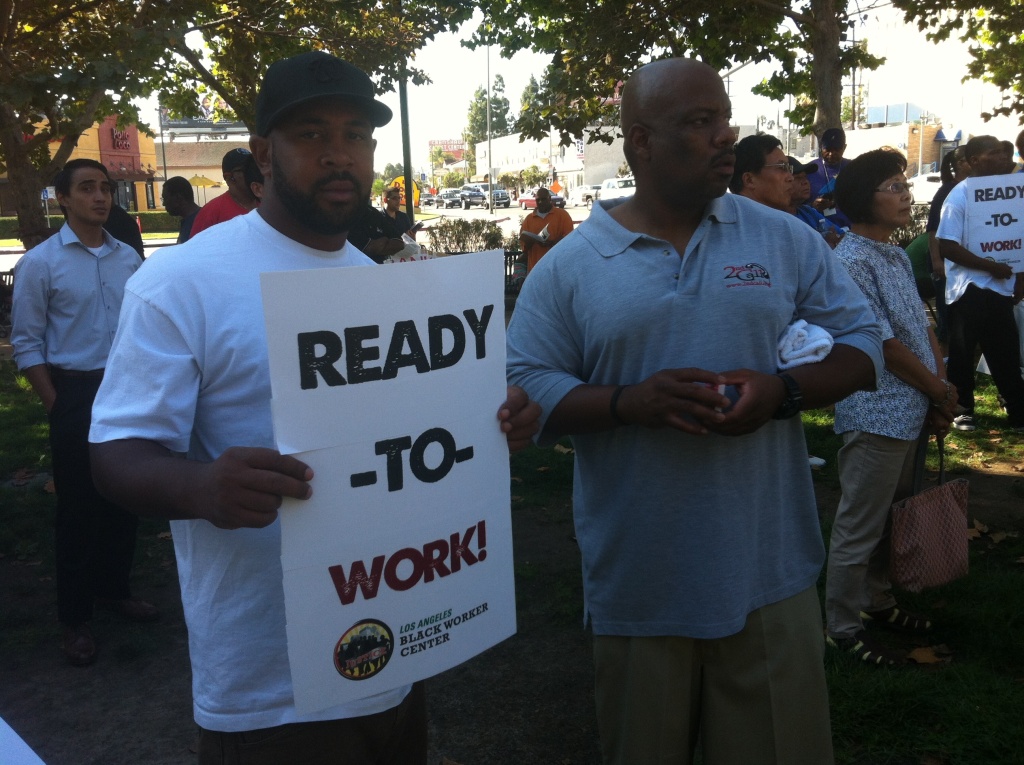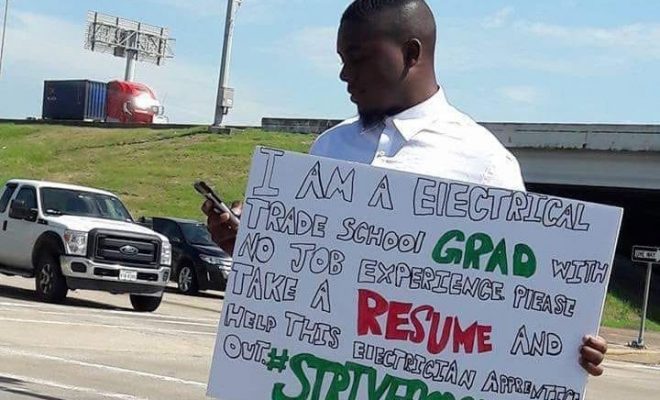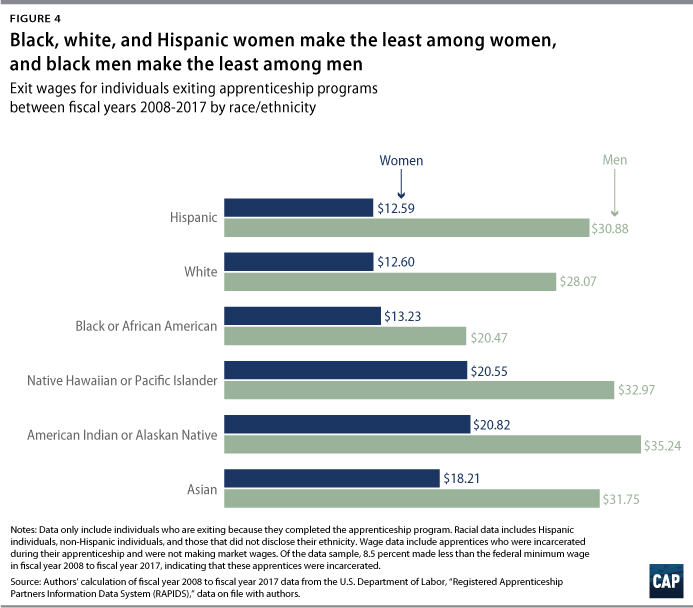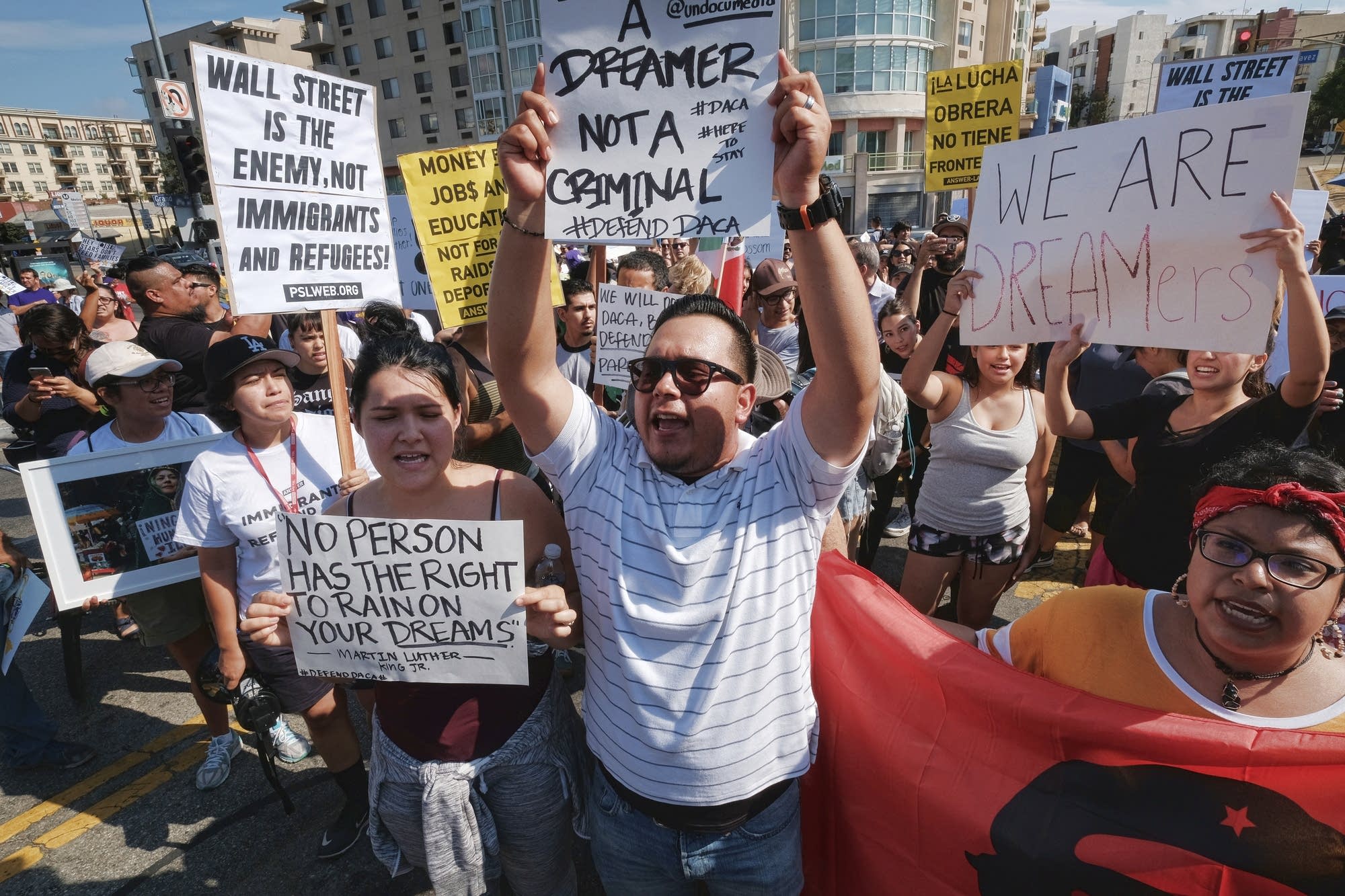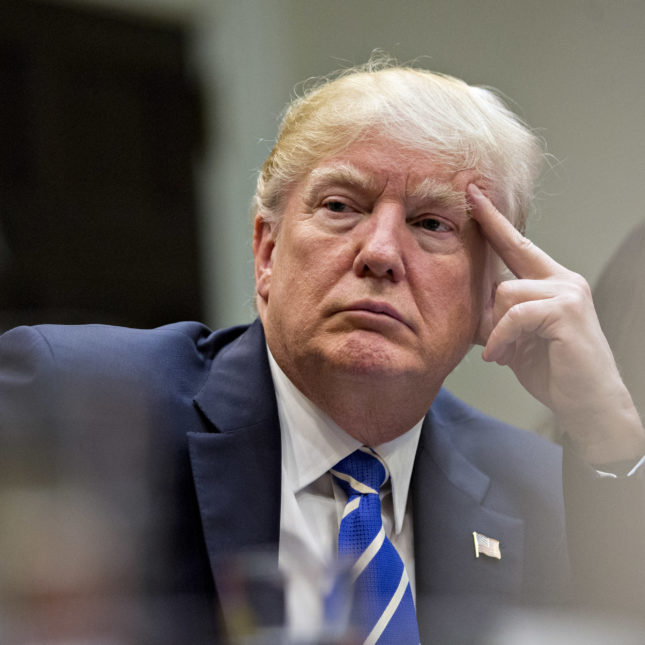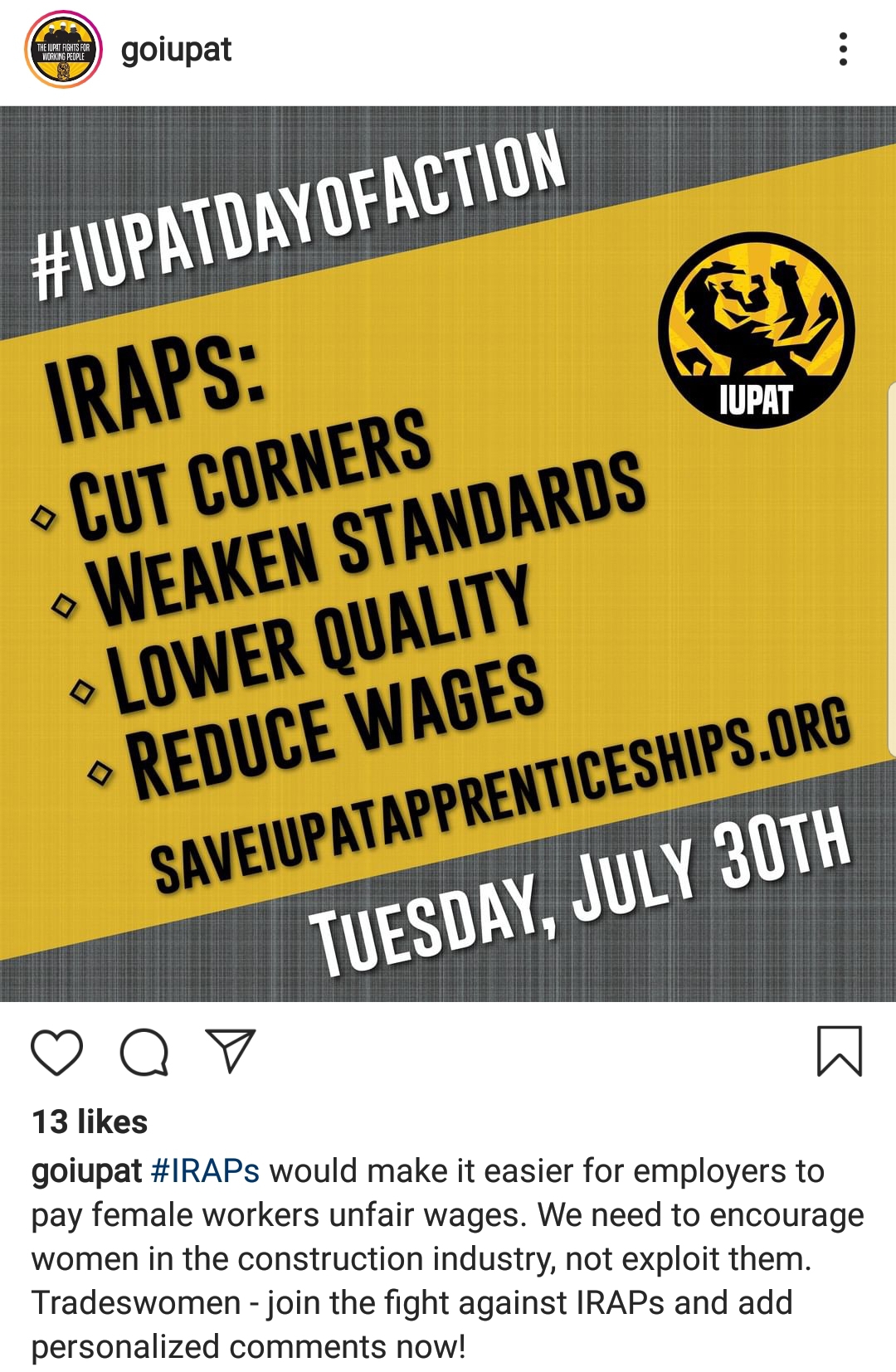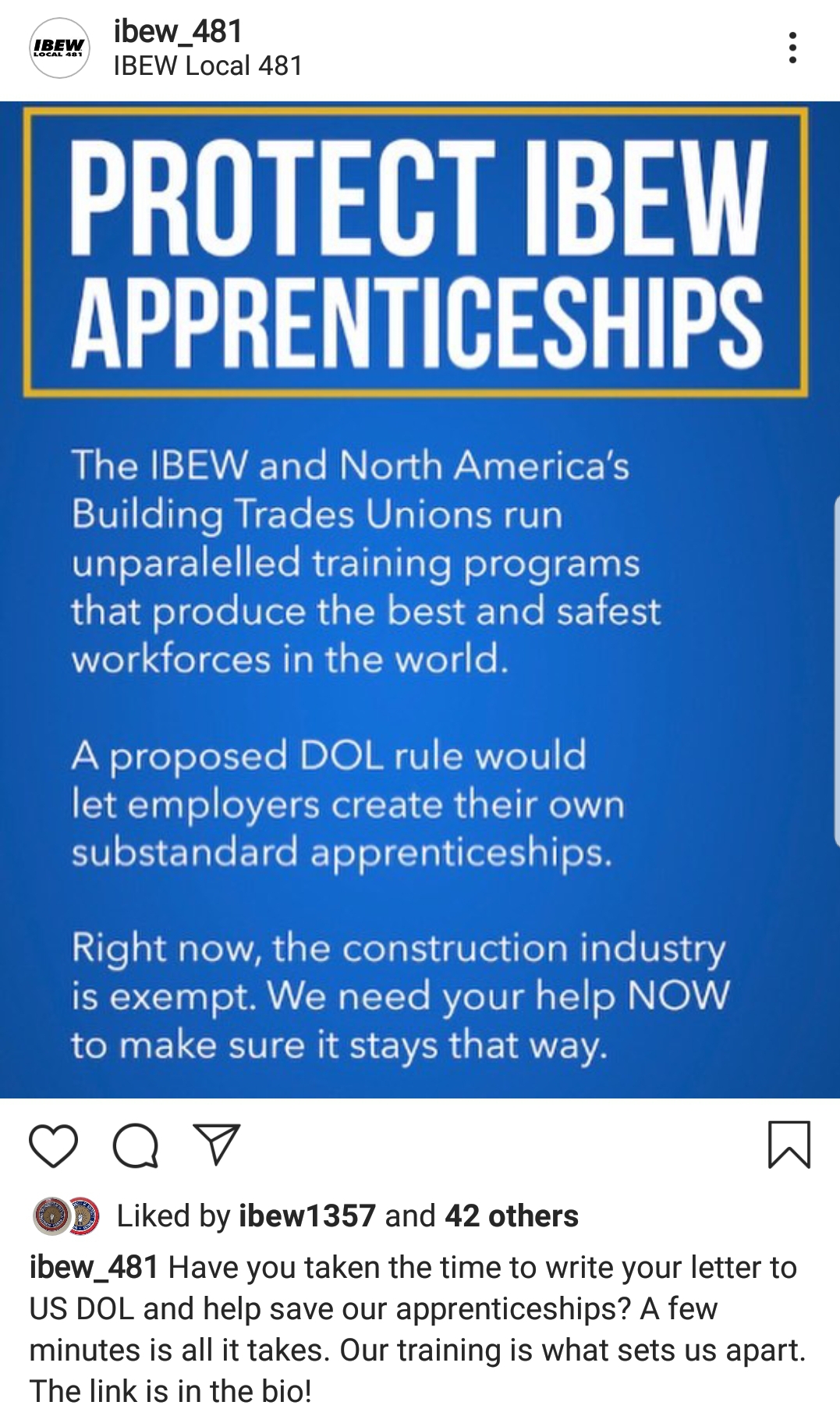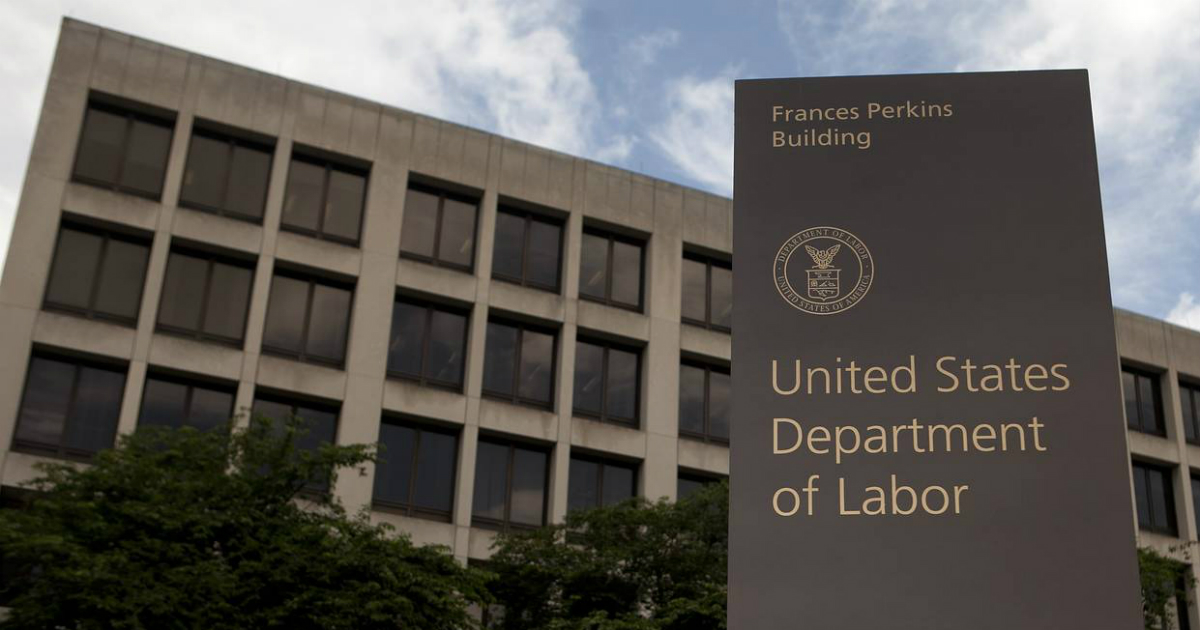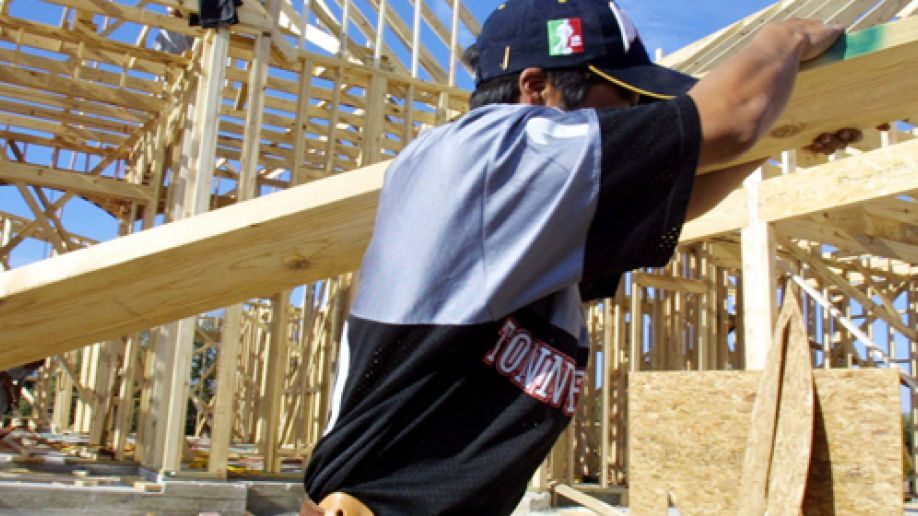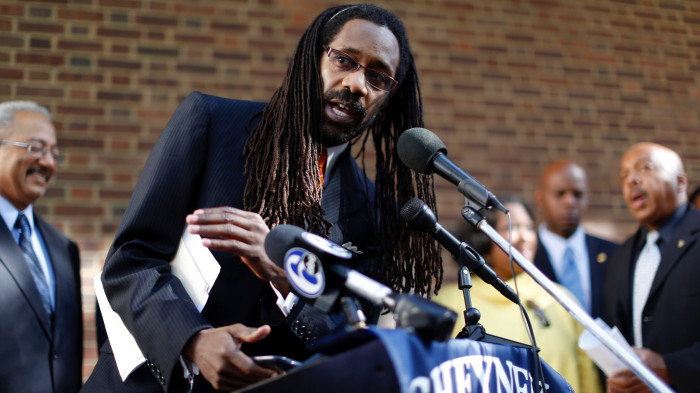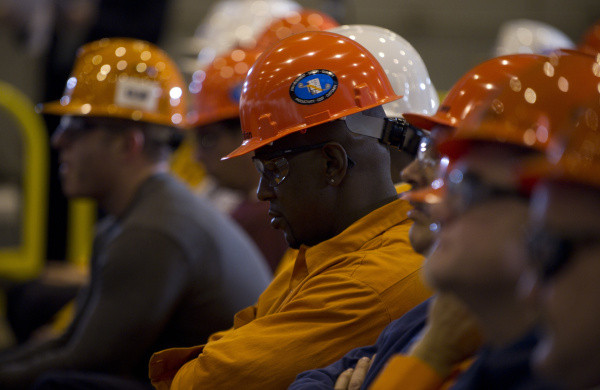Ray's article
Apprenticeship programs can and should be a broadly
accessible path to high paying careers that pay a living wage. However,
currently, too many workers, particularly black/African American workers - face
difficulties accessing these programs, especially the programs that pay the
highest wages.
The U.S. system of registered apprenticeship has been responsible for putting more Americans into the middle class over the last 80 years, than any other form of education in the U.S.
Apprenticeship is, hands
down, the country’s most effective education and employment model, especially
for the construction industry. Imagine earning a quality education, graduating
with no debt, and transitioning directly into a career paying more than $60,000
a year, this is a reality for most apprentices in America.
But, in contrast to the German and Swiss apprenticeship
systems, where upwards of half of all young people, millions of them are
prepared for a range of careers through apprenticeship; whereas the American
system serves just over a half a million apprentices in any given year, and
prepares them primarily for careers in the skilled trades.
Aside from the traditional construction related apprenticeships, the Trump administration over
the past 2 and a half years has embarked on a mission of expanding
apprenticeship programs into new industries, such as health care and
information technology, with a goal of better connecting these apprentices to
higher education.
The Trump administration in fact, is building an entirely
new system of ‘industry-recognized apprenticeship programs,’ or IRAPs.
TRUMPS IRAP’s ARE
EXPECTED TO CHANGE THE GAME
IRAP was born out of President Donald Trump’s 2017 Executive
Order to Expand Apprenticeship in America.
In section 8 of the order, the Secretary is directed to establish a Task
Force on Apprenticeship, bringing together industry and workforce leaders to
consider how to promote apprenticeships especially in sectors where they are
insufficient.
The Presidents program is designed to expand apprenticeship
opportunities and give business more say in crafting training programs.
Although the construction industry is lacking trained, qualified skilled
workers at a record number, in its roll out, the administration will exclude
the construction industry from participating in the IRAP.
Effectively, privately ran IRAP’s will massively overhaul
apprenticeship regulations, and be governed by a distinct set of new
requirements, and quality-assurance processes that, the administration argues,
will make it easier for sectors like IT and health care to adopt apprenticeship
programs, and closely institute them under federal employment guidelines, such
as anti-discrimination policies which for years have been outright ignored by
some unions and privately recognized apprenticeship programs.
As the Trump administration continues to make investments
necessary to grow apprenticeship programs, their policies must center on
helping black workers, and other underrepresented groups to ensure equitable
access.
There is a lack of resources and social networks in the
black/African-American community to get into many high paying jobs, especially
those that lead to long-term careers like the one’s apprenticeships provide.
Apprenticeship programs offer one of the few career pathways
to people without college degrees, with few skills or with criminal records.
But entry into union ran apprenticeship programs are extremely competitive.
For the highest-earning apprenticeship programs, like electrical and sheet metal work, applicants must pass an entrance examination that tests math skills, among other abilities, and then interview for these positions under adverse scenarios, many times battling internal hiring practices such as nepotism.
This is why the Trump administration and the DOL
must include the construction industry into it’s IRAP initiative.
BLACK APPRENTICES FACE DISCRIMINATION
Although, Registered Apprenticeships are apprenticeship
programs that are registered with the DOL and are governed by regulations laid
out under the National Apprenticeship Act.5, and although these regulations lay
out labor standards for these programs and govern their Equal Employment
Opportunity (EEO) rules, many black/African American apprentice file
complaints, and lawsuits claiming damages due to massive amounts, and sometimes
organized acts of discrimination and exclusion from federally recognized
apprenticeships.
Currently, EEO rules prohibit apprenticeship sponsors - typically employers or unions—from engaging in discrimination, as well as require them to take affirmative steps to ensure EEO, including efforts to recruit from a broad pool of potential apprentices. Furthermore, programs with five or more apprentices are required to develop a written affirmative action plan and conduct an apprenticeship utilization analysis to ensure that they are drawing adequately from the local pool of available workers.
Yet in 2017, 63.4 percent of individuals who completed
Registered Apprenticeship programs were white, 10.7 percent were Black/African American, and 20.5 percent did not provide their race to their
Registered Apprenticeship sponsor at all.
According to many studies, one challenge in identifying
trends in apprenticeship participation by ethnicity and race is that the share
of those who do not provide their ethnicity or race. The lack of reporting has
increased significantly over time with Hispanics, with 29 percent of Hispanic
apprentices refusing to provide their Hispanic ethnicity in 2017—up from 3.3
percent in 2008.
Policymakers insist that this issue should be resolved immediately as more accurate data on the racial and ethnic composition of apprentices are necessary to conduct a fair equity analysis.
BLACK APPRENTICE FACE
UNFAIR COMPETITION
In many cases after completing stringent and intense union
ran apprenticeships, black/African-American apprentices find it difficult to
find work.
Black/African American apprentices had the lowest exit wages
of all racial and ethnic groups examined, at $14.35 per hour in fiscal year 2017.
White apprentices had the second-lowest earnings at $26.14; although white apprentices earned more than 50% more than Black/African American apprentices’ wages.
Median wages for Hispanics/Latinos completing apprentices
were the highest as they earned around $30 per hour.
One of the reasons that wages for Hispanics/Latinos apprentices are so much higher may be that they are more likely than black and white apprentices to complete their apprenticeship programs in Western states versus the south.
From fiscal year 2008 through fiscal year 2017, exit wages
for apprenticeship programs were highest in Western states at $32.50 and lowest
in the Southern states at only $20.80.
DACA
Another reason for the huge difference in wages amongst Black and Hispanic apprentices can also be attributed to large populations of 'non-citizen Hispanic' workers in Western states that are participating in the workforce,aat the union and non-level.
Many DACA recipients are also members of union ran apprenticeships, using employment
authorization cards (work permits), often issued through the Deferred Action
for Childhood Arrivals program known as DACA that President Barack Obama created
in 2012.
The DACA program, which was established without congressional approval, has protected 670,000 undocumented immigrants from deportation and enabled them to get work permits, and enter into apprenticeships, these people are commonly referred to as 'DACA recipients'. or'Dreamers.'
This work permit not only gives illegal alien workers the right to work in the U.S., it also creates unfair competition for native born, foundational black American apprentices seeking employment in the same trade fields.
The Trump administration and his justice department is preparing to end the DACA program altogether, which has prompted the Supreme Court to intervene, the court’s decision on rather its lawful for Trump to end the DACA program iexpected to be decided in the midst of the 2020 presidential election.
HOW WILL TRUMP
FIND FUNDING FOR IRAP’s?
“I don’t think
there’s going to be any takers because there’s no money,” a trade group
lobbyist told Bloomberg Law.
The Labor Department’s (DOL) announcement about the
implementation of this new nationwide apprenticeship program has some unions
and trade groups at arms with the department. Although the Trump administration
has not allocated any federal funding for these IRAP’s, that may be changing,
as it seems increasingly likely that the IRAP programs will become eligible for
federal funding.
According to Bloomberg Law, the Labor Department has a few
places where it can look for cash to fund IRAP grants if Congress decides not
to specifically appropriate money for the program.
That includes using funds allotted for the H-1B visa
program, which the DOL has wide latitude to spend as it sees fit. The H-1B visa
program offers temporary employment permits to foreign workers in the U.S. tech
jobs and other specialized occupations.
President Trump has mentioned his planned overhauls for the
H-1B program in the past, and has stated that he may reallocate funds from this
program to benefit American workers thru IRAP’s. In fact, late last summer, DOL
issued a funding opportunity announcement (FOA) outlining $150 million in grant
awards for apprenticeship programs, derived from fees paid by employers to
sponsor H-1B visas for workers coming from abroad.
Congress, both republicans and democrats, continue to demonstrate
their support for expanding apprenticeship programs. In 2016, DOL received $90
million in the first-ever congressional appropriation targeted specifically at
apprenticeship expansion. Since then, this amount has climbed steadily—$95
million in FY 2017, then $145 million in FY 2018, then $160 million in FY 2019.
And, although the Department of Labor has established that
IRAPs will not initially affect the construction industry or military apprenticeships,
many labor unions see IRAP’s as a future threat to their long established apprenticeship
programs.
UNIONS PREPARE FOR
WAR
Jim Reid, the apprenticeship director for the International
Association of Machinists, said the DOL’s efforts to fast-track the establishment
of IRAP’s has purposefully left out many union voices.
While many unions and trades groups are arguing that
privately ran IRAP’s pose a threat to their established apprenticeship programs, that have been historically white,
many others argue that IRAP’s will offer opportunities, and specialized training
to black workers that are employed more than 50% as non-union workers, and are
excluded from union ran apprenticeships at alarming numbers.
Worried that IRAP regulations and accrediting standards will
eventually crossover into the construction industry, many labor unions are
warning the Trump administration against such action. Union representatives are
warning Trump that if his administration winds up breaking from its commitments
to exclude construction in the proposed rule, the building trade unions are
prepared to abandon their support of Trump.
A brief look at many labor uniots twitter and Instagram pagess over the weekend show that union leadership is preparing to mount a public campaign attacking IRAP’s and the administration for what they feel will undermine union-protected wage and safety standards, a building union lobbyist told Bloomberg Law.
At the moment some White House officials have been advocating for construction industry inclusion, a reversal on what Trump initially proposed, analit is alienating the blue collar organized union labor groups that Trump has been, and will be counting on for support in his 2020 re-election bid.
In it’s current form, the national apprenticeship system
sponsors of programs - employers, unions, community colleges - have to register
with a state or federal apprenticeship agency that, in turn, determines whether
their programs meet a set of regulatory requirements on things like program
length, balance of on-the-job training versus classroom instruction, and the
apprentices’ wages and working conditions.
IRAP REGULATIONS & UNION APPRENTICESHIPS
Under the Trump administration’s proposal, programs could seek formal recognition from the Labor Department through a new system of “program accreditation.”
To accomplish this, the Labor Department is planning
to recognize more than 70 individual IRAP “accreditors” and grant them
authority to determine if a program meets a set of high-quality apprenticeship
standards that the department spelled out earlier this year.
NABTU, an umbrella group within the AFL-CIO that represents
15 individual building trade unions, has supported the Trump administration,
but that would all change if builders, mainly non-union builders are allowed to
take part in IRAP, a building trade’s official said. At that point, the trade
unions would organize members to accuse the administration of betraying
commitments to blue collar workers, the official said, speaking with Bloomberg
Law on condition of anonymity.
Yet, the administration contends that The National Apprenticeship Act (NAA), 29 U.S.C. 50, authorizes the Secretary of Labor “to bring together employers and labor for the formulation of programs of apprenticeship. The U.S. Department of Labor (the Department or DOL) proposes doing so through a new program recognizing Standards Recognition Entities (SREs) of Industry-Recognized Apprenticeship Programs (Industry Programs).
This
new program is intended to harness industry expertise and leadership to meet
the United States’ skills needs in the twenty-first century.
Opponents of IRAP’s also argue that the proposed quality-assurance process for IRAPs closely resembles the national accreditation system of for-profit career colleges and trade schools.
Unions and other opponents of IRAP's say that IRAP’s will not be properly regulated for quality-assurance by the government, and will enable the rise of multiple accreditors with overlapping jurisdictions and competing standards, and will not provide clear mechanism for holding accreditors or programs accountable for poor outcomes.
In response the DOL proposes that the new IRAP Standard
Recognition Entities (SREs) will be recognized for 5 years. The SRE must
reapply if it seeks continued recognition after that time, using the same
application form it submitted initially. The Department proposes a 5-year time
period to be consistent with best practices in the credentialing industry.
IN CONCLUSION
The President and policymakers working to expand apprenticeships
should also work to eliminate occupational segregation in apprenticeship
programs to ensure that black/African-Americans have access to apprenticeship
programs in the highest-paying occupations.
Policymakers should also ensure that new IRAP regulations include the construction industry, while also ensuring apprenticeship programs
are required to comply and support wage progression policies that help ensure
that the highest-wage programs remain well-paying.
Furthermore, policymakers should seek to expand
apprenticeships into new industries, such as IT, healthcare, and childcare,
while increasing wages across the board.
As our network has reported in the past, the massive corruption that plagues one of the largest industries in the United States, construction, has never been fully remedied, and it is alive and well in 2019. The blood and sweat that has been poured out by black tradesmen and women in the hope of realizing the American dream, has always been undermined by secretive organizations, pacts, and industry gangs.
‘Mexican Cliques in Construction’, a book by thirty-year Hispanic carpenter Ricardo Charles, details a story of racism, fraud, discrimination and organized crime that is controlling the construction industry across the state of Texas.
In his interview with reporter Greg Groogan, of Houston’s FOX26, Ricardo Charles was asked if black construction workers were welcome on construction sites in Texas. Charles said, "Oh no, blacks, they are out of the question. Blacks are out of the question. Nobody wants a black person in there." Charles, a US Army Veteran, was speaking about what the "cliques" would say about black tradesmen in the workforce.
Mexican racism plays a major part in keeping out blacks workers. Charles says those who run organized construction “cliques”, largely Hispanic crews almost never willingly hire black construction laborers.
The practice of rejecting black labor is deeply entrenched discrimination which extends to white workers as well, Charles said.
"They have these groups that are going to harass you, they want to insult you, degrade you. They want to make it very, very hard on you. They want to make false accusations about you: that you don't know how to do the job, you don't know how to talk to them, but they are all in the same conspiracy. It is a gang, like organized crime," Charles said.
For years Black tradesmen and women have been targeted by these secretive Mexican labor gangs according to Charles, effectively cutting black workers off from decent-paying construction. According to Ricardo Charles, Mexican groups conspire to keep jobs for themselves in industrial construction, and work with construction contractors to keep black tradesmen and women unemployed.
In an interview with Bob Price, Charles stated,"Corruption has been going on inside the plants for many years, but today's workforce comes with a culture of bribes. The Mexican culture of bribery makes it hard for ordinary citizens to be part of the workforce. However, these cliques help the employers by controlling the job sites by driving out 'unwanted' new workers. Anybody who disagrees with an unlawful act gets terminated."
"The traditional way of hiring through human resources has changed. Corrupt supervisors and managers inside do the hiring and firing giving preference to relatives and friends who, on occasion, pay to obtain the job. The employee of choice is the one who can be manipulated and does not report criminal acts. Eventually these type of workers join the existing group adding more crime into the system." Charles continued.
This evasive form of discrimination and nepotism being practiced throughout the industry is causing thousands of talented black construction workers to become bitter and discouraged. Recently in Atlanta black tradesmen confronted a Mexican construction worker who hung a noose on the job site. The noose incident in Atalanta and other cities, is provoking racial tensions that already exist, and these types of situations could have very ugly outcomes.
Since many millions of Mexican workers do not speak the official language, they commit fraud by cheating on the NCCER certifications and safety exams. Charles says they are supported by employers with no rights for the ordinary worker; they are organized criminals, and terrorist.
Over dozens of years and hundreds of sites across Texas, including the giant petrochemical complex in Port Arthur, he says Mexican construction cliques have muscled honest workers out of millions of dollars.
Money that's made gang bosses rich. He's talking about bribes. They call it "Mordida" in Mexico, the bite.
"This is actually just like in Mexico. It's not how much you know, it's who you know," Charles said. "Everybody knows. Yes, many people know that you have to belong to a clique in order to work. Mexicans exploiting Mexicans and contractors looking the other way," he said.
There's nothing casual about his allegations. Everything he's witnessed:
-- The "pay for play"
-- The graft
-- The enforced silence
-- And the corrupt complicity of contractors
He has also brought his allegations and evidence to the FBI.
It’s all recorded in his book “Mexican Cliques in Construction,” Twelve chapters including the author's background with more than thirty years experience in construction in 244 pages. Copies of "Mexican Cliques in Construction" can be obtained by contacting Ricardo Charles through his email address: ricardocharles46@hotmail.com.
Black tradesmen and women must Organize! Organize! Organize! And recognize what how deep the bribery and discrimination in the construction industry runs, and how they are being targeted. Black construction tradesmen and women in the United States descend from a linage of master tradesmen and craft-workers, and only by organizing their labor and talents together as a single force will they ever realize true success & potential in this industry that has a notorious history of racial discrimination.
Join our site today and network with black construction professionals from all trades across the United States!
One year ago a lawyer by the name of Michael Coard wrote a
seven part series for the Philadelphia Tribune exposing the blatant racist
practices of the construction industry in the Philly metropolitan area, and how
the city council was being“pimped” by the labor unions.
In his brilliant article titled, ‘Is Council pimped out to racist labor unions?’ Coard exposed now federally indicted, John “Johnny Doc”
Dougherty, Business Manager of Philadelphia Building and Construction Trades
Council (PBCTC) as well as of Local 98 of the International Brotherhood of
Electrical Workers (IBEW).
Attorney Michael Coard (photo above), who serves as an Adjunct Professor
at Temple University, and according to his Twitter profile is an, “African,
Attorney, Radio & TV Host, University Professor, Newspaper Columnist, and
Magazine Journalist- but mostly just The Angriest Black Man in America,” exposed
how in 2016 “Johnny Doc” and his PBCTC, a group of “white suburbanite men” were
responsible for nearly 65 percent of small, city-funded construction projects,
while having absolutely no Blacks whatsoever on the workforce in a city with a
Black population approaching nearly 50 percent.
And According to Coard, “as of 2013, when the most reliable
figures are available, about 80 percent of PBCTC carpenters, electricians,
painters, etc. were white.”
“Although I’m not (yet) saying he, personally, is a racist,
I am unequivocally saying his policies are blatantly racist and the unions he
controls are blatantly racist because I do have incontrovertible evidence of
that. And it’s the direct result of what we lawyers call “disparate impact.” In
other words, while it’s relatively difficult to prove what’s in a person’s
head, it’s easy to prove the effect- or impact- of what’s in his/her head. That
is done by simply looking. And what I see in Dougherty’s policies and unions
are racially ugly,” Michael Coard said in his Tribune article.
According to the Philadelphia Inquirer, John “Johnny Doc” Dougherty
spent 25 years controlling some of the biggest chess pieces in Philadelphia,
building Local 98 of the International Brotherhood of Electrical Workers (IBEW)
into a political powerhouse that helped to elect mayors, council members, and
members of the state Supreme Court, including his brother, Justice Kevin
Dougherty. He’s been credited with playing an integral role in the ongoing
redevelopment of the city’s Market East corridor.
In his heavy hitting article Coard asserts, “Let’s get back
to Dougherty. In fact, let’s get back to him and Council jointly. In order to
get the answer to my inquiry, i.e., “Is Council Pimped Out To Racist Labor
Unions?,” I asked him these three questions:
1. What is the percentage of Black workers in IBEW Local 98
and also in each of the other 30 Philadelphia-area building trades unions
(alphabetically) from Boilermakers Local 13 through Teamsters Local 312?
2. What exactly have you done within the past ten years to
increase the percentage of Black workers in the local building trades unions?
3. Since 2008 through 2018, how much money have you, your
labor union, and all PACs financially connected with you and also with your
labor union contributed to each current Council member for election as well as
reelection?”
But now “Johnny Doc” faces a 116-count indictment from the
U.S. Attorney’s office, the indictment which alleges embezzlement and conspiracy
has many white Philadelphia tradesmen wondering can the their control of the
council survive without its kingmaker, the political figure who amassed so much
power behind the scenes, that he was more influential than the mayor.
According to the Inquirer,” Dougherty grew so powerful that
he was soon able to pressure a conglomerate like Comcast, during private hotel
meetings, to steer nearly $2 million worth of work to his old friend’s
electrical company.”
And in 2015 “Johnny Doc” showed just how strong his
political power and influence with working class voters had become when he correctly
predicted that most of the city’s labor unions would unite around a single
mayoral candidate, and they eventually did, electing Jim Kenney as Mayor of Philadelphia.
But, Mayor Jim Kenney, according to Coard, “who, is a white
man; has taken a strong stand against racial discrimination in the construction
industry has taken than the lead in calling for nearly 30 percent of all ‘Rebuild’
workforce hours to go to Black (as opposed to merely “minority”) workers.“
The Mayor’s Office of Economic Opportunity (OEO) also “conducts
Annual Disparity Studies to track the progress of Blacks and other “minorities”
on major construction projects, which Coard hoped would "expose the outrageous racist
disparities we all suspected,” according to Coard.
Yet, government lawyers have alleged among other charges
that, City Councilman Henon, a union electrician elected in 2011 on a wave of
Local 98 money, is a corrupt politician who sold his Council seat in exchange
for a $73,000-a-year, do-nothing job. Prosecutors allege he then served as
Dougherty’s puppet, backing votes and advancing government actions that
benefited the labor leader’s personal and professional interests.
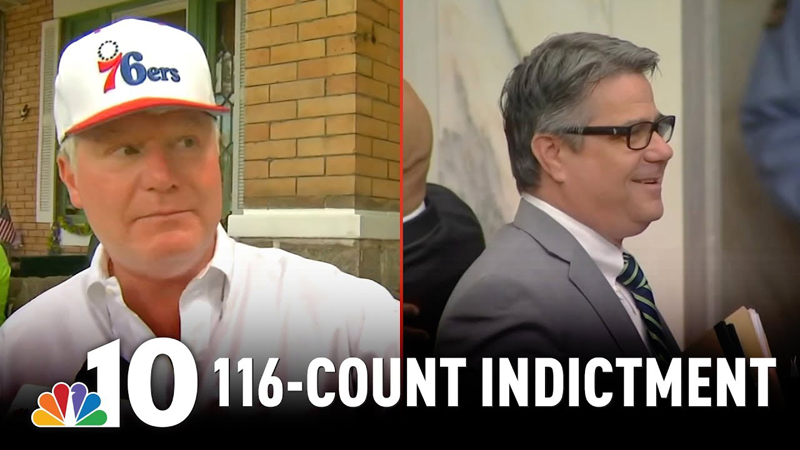
On March 21, “Johnny Doc” Dougherty urged a judge to dismiss
all charges that he corruptly bought Philadelphia City Councilman Bobby Henon’s
vote on key issues, calling the allegations a “feeble attempt at criminalizing
the legislative process.”
What U.S. District Judge Jeffrey L. Schmehl will make of "Johnny Doc's" assertions remains to be seen. No hearing had been scheduled to consider
the defense motion as of Thursday, and prosecutors had not yet responded to it
in court.
In recent years of Philly corruption, the city has seen its Congressman
Chaka Fattah, the representative from the 2nd congressional
district, indicted and found guilty on racketeering charges. The Federal government
found Chaka guilty of siphoning money from an education nonprofit to repay an
illegal campaign loan, and sentenced him to 10 years in federal prison.

